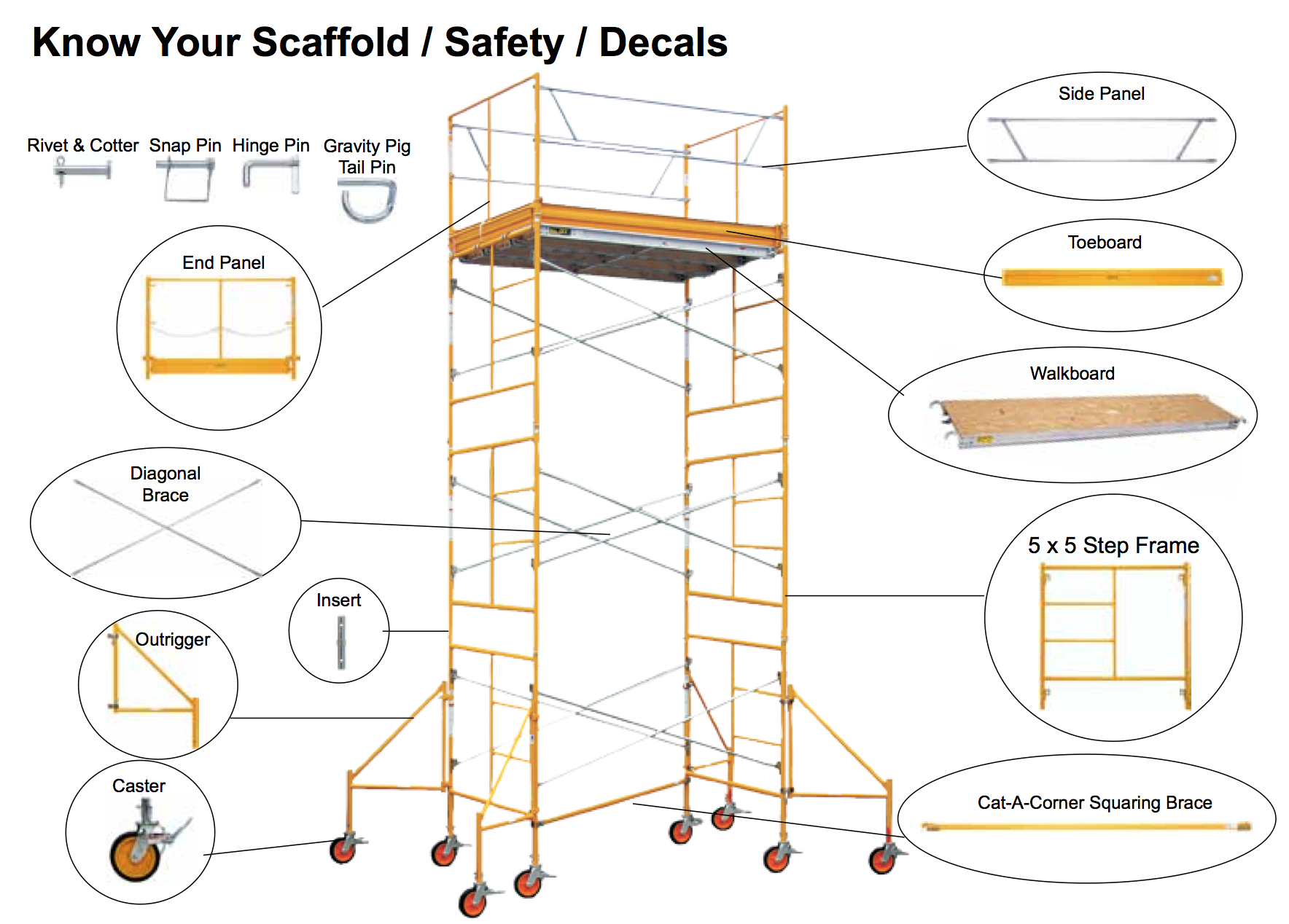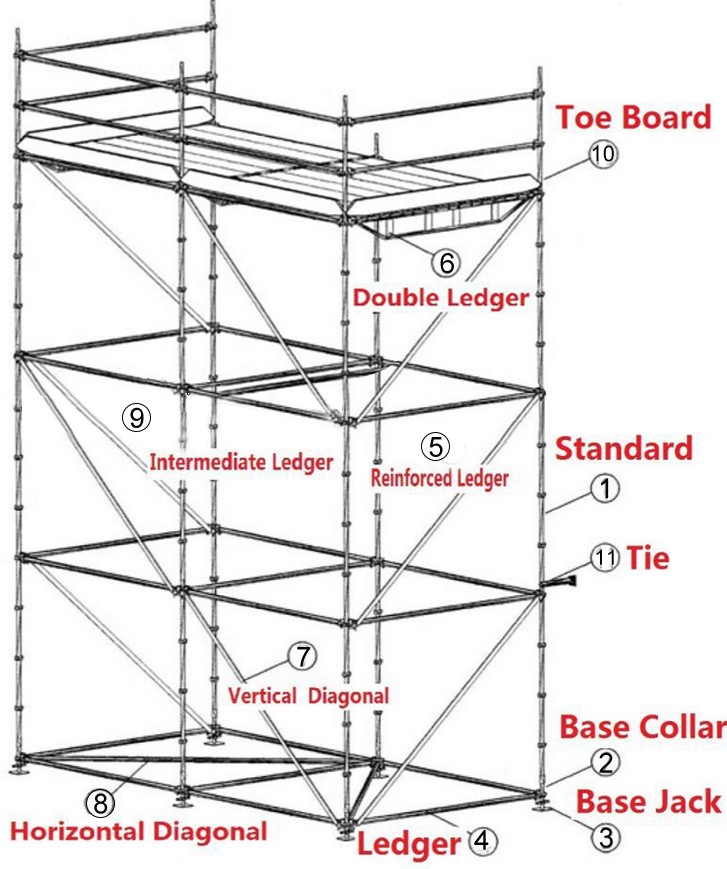Scaffolding in Urban Environments: Difficulties and Solutions
Scaffolding Tons Capabilities: What You Need to Know ====================================================
Understanding the details of scaffolding load abilities is essential for worksite safety and security and stability. It entails variables like tons capability training, load circulation approaches, weight estimations, and compliance with industry standards. Product toughness and style integrity play essential duties. Adhering to policies and handling load capabilities purposefully are important for security. Carrying out proper weight distribution methods and regular monitoring assurance structural honesty. Exploring better into kinds of tons, elements impacting abilities, policies, and monitoring methods will certainly deepen your understanding of scaffolding load abilities.
Value of Tons Abilities
Understanding the lots capabilities of scaffolding is vital for making certain security and architectural stability on construction websites. Load capability understanding is vital to stop overloading, which can result in collapse and mishaps. Workers should be trained to recognize the signs of overloading and comprehend the safety measures required to mitigate risks. Appropriate load capacity training makes sure that employees can conduct precise danger evaluations before utilizing scaffolding for various tasks.
Determining Load Capacities
When thinking about scaffolding tons capacities, figuring out the load abilities is essential for ensuring the safety and security and security of the framework.
Variables such as tons ability elements and weight limitation calculations play a considerable duty in this decision process.
Lots Capability Elements
To properly establish the tons capabilities of scaffolding, different aspects have to be taken into consideration. These factors play an essential role in ensuring the security and effectiveness of scaffolding frameworks. When determining lots abilities, the complying with vital elements must be taken into account:
Load Capacity Criteria: Conformity with industry requirements and laws is essential to ensure that the scaffolding can sustain the intended loads without jeopardizing security.
Tons Ability Checking: Carrying out comprehensive lots capacity tests is crucial to assess the capacity of the scaffolding to stand up to various weight tons and problems.
Product Toughness: The product used in constructing the scaffolding significantly affects its load-bearing capability.
Layout Stability: The total layout and setup of the scaffolding system impact its lots capacities.

Weight Limit Calculations
The evaluation of weight restrictions plays a vital role in establishing the load capacities of scaffolding frameworks. Determining weight limits involves considering lots distribution across the scaffold to ensure it can securely support the designated tons.
Tons screening is an important facet of determining weight limitations, where the scaffold goes through varying weights to review its ability under various conditions. Correct weight restriction estimations are crucial for ensuring the safety and architectural honesty of the scaffolding system.
Variables such as material toughness, style specs, and ecological problems must be considered during the weight limit calculations to stop overloading and prospective architectural failings. By precisely establishing weight limitations through load circulation evaluation and thorough lots screening, prospective threats can be reduced, making sure a protected working environment.
Sorts Of Scaffolding Loads
The types of scaffolding loads incorporate load distribution techniques, weight restriction factors to consider, and safety and security variables analysis. Recognizing just how tons are distributed on scaffolding frameworks is important for keeping stability and stability.
Weight limitations and safety and security factors play a significant function in guaranteeing the scaffold can sustain the designated loads without compromising safety.
Lots Circulation Methods
Effective distribution of tons on scaffolding structures is important for ensuring security and safety and security throughout building and construction tasks. To achieve this, the following methods and strategies are typically utilized:
Also Weight Distribution: Distributing the load uniformly throughout the scaffolding platform helps protect against straining particular locations.
Appropriate Placement of Materials: Positioning materials more detailed to the center of the platform reduces the risk of unbalancing the structure.
Normal Load Evaluating: Performing lots tests to assure the scaffolding can securely sustain the desired weight.
Adherence to Safety Measures: Complying with security standards and using proper devices can help stop mishaps connected to incorrect load distribution.

Weight Limit Considerations
Factor to consider of weight limits on scaffolding structures is crucial for guaranteeing safety and structural stability during construction tasks. Lots circulation plays a critical role in determining the weight limitation that a scaffold can securely support.
It is necessary to follow producer standards and design specs to see to it that the weight is equally distributed across the scaffold. Inadequate load circulation can bring about overloading particular sections, possibly triggering structural failures.
Safety and security precautions such as normal inspections and weight monitoring must be implemented to prevent exceeding the optimum weight restriction. By sticking to weight limit considerations and executing correct tons circulation techniques, construction teams can reduce the dangers associated with scaffolding collapses and ensure a safe working environment for all workers associated with the task.
Safety And Security Elements Evaluation
To make certain the structural stability and safety of scaffolding systems, a thorough evaluation of safety elements associated with numerous kinds of scaffolding loads is important. When performing a security variables evaluation for scaffolding tons, it is necessary to consider the following:
Dead Plenties: These are the fixed weights of the scaffold components and tools. Precaution have to consider these loads to avoid overloading.
Live Loads: These vibrant loads include workers, tools, and products on the scaffold. Risk assessment should incorporate live loads to identify secure working problems.
Ecological Loads: Wind, rain, and snow can apply pressures on scaffolding frameworks. Safety measures must resolve the effect of these environmental aspects.
Influence Tons: These unexpected tons can occur as a result of went down tools or equipment. Threat evaluation protocols ought to include actions to minimize the dangers connected with effect tons.
Variables Impacting Tons Capabilities
Variables influencing load capacities must be extensively analyzed to ensure secure and reliable scaffolding operations. A number of key aspects play a critical role in identifying the tons capacities of scaffolding frameworks.
To start with, the layout and materials used in the scaffolding construction greatly influence its load-bearing capacities. Aspects such as the sort of scaffolding system, its setup, and the quality of components used all add to its total tons capability. Additionally, ecological problems, such as wind speed, temperature, and seismic task, can impact the stability and load-bearing capability of scaffolding.
Additionally, safety and security preventative measures have to be very carefully taken into consideration when assessing tons capacities. Straining a scaffold beyond its capability can lead to structural failure, positioning severe dangers to employees and onlookers. Routine evaluations, appropriate maintenance, and adherence to weight limits are vital safety measures to stop mishaps associated with overloading.
It is important for scaffolding drivers and workers to be knowledgeable regarding the aspects influencing load abilities and to comply with rigorous safety and security protocols to ensure a safe and secure working environment.
Lots Capability Rules
Regulations governing the load capacity of scaffolding structures are basic for making certain work environment safety and conformity with industry standards. Following these load capacity laws is vital to prevent crashes, safeguard workers, and keep the architectural stability of the scaffolding.
Below are four key points to contemplate pertaining to tons capacity policies:
Lawful Requirements: Lots capacity laws are commonly mandated by federal government bodies to guarantee that scaffolding structures meet minimal security standards. These regulations normally detail the optimum tons that a scaffold can bear securely.
Sector Requirements: Along with legal needs, market requirements set by companies such as the Occupational Security and Health And Wellness Management (OSHA) supply guidelines for load capability policies. These requirements assist make certain consistency and finest methods across the market.
Normal Evaluations: To comply with tons capacity regulations, scaffolding frameworks must undertake routine inspections to analyze their integrity and ensure they can support the desired loads.
Documents: Correct paperwork of tons capability assessments and inspections is required to demonstrate compliance with guidelines and industry criteria. This paperwork can also act as a reference for future examinations and maintenance activities.
Taking Care Of Tons Abilities
Managing lots capacities successfully involves carrying out tactical steps to guarantee that scaffolding structures operate within secure limitations while maintaining effectiveness and structural security. Load administration strategies are crucial in making certain that the weight dispersed throughout the scaffold is within the specified lots capability. One key element of taking care of tons capacities is lots ability tracking, which involves normal checks and assessments to validate that the scaffolding is not being strained.
Weight circulation strategies play a key function in keeping the architectural honesty of the scaffold. Appropriate load capability planning is important to ensure that the weight is equally distributed, minimizing the threat of overwhelming certain areas. By strategically intending the circulation of weight on the scaffold, possible threats can be mitigated, and the total security of the framework can be enhanced.
Efficient monitoring of load abilities calls for a detailed understanding of the scaffold's load-bearing abilities and attentive adherence to weight limitations. By carrying out robust tons monitoring methods, carrying out normal load ability surveillance, and utilizing ideal weight distribution methods, scaffolding structures can run safely and successfully.
Regularly Asked Concerns

Can Load Capabilities for Scaffolding Be Adjusted Based Upon the Certain Needs of a Task? https://hamptonhillscaffolding.co.uk
Lots abilities for scaffolding can be adjusted according to the details demands of a job. Understanding job demands is necessary in identifying the proper lots capacity. It is essential to adhere to safety and security standards and talk to specialists when making changes.
Exist Any Sector Requirements for Identifying Tons Capacities on Scaffolding Devices?
Readjusting criteria in the building industry is crucial for guaranteeing precaution are met. Industry standards for identifying tons capacities on scaffolding equipment remain in area to supply clear assistance and advertise a risk-free workplace.
Exactly How Typically Should Tons Capacities Be Reassessed for Scaffolding Frameworks on a Building And Construction Website?
Regular reevaluation of load capacities for scaffolding structures on building and construction sites is vital to ensure security. Readjusting requirements may vary based on site problems and use changes. Market best practices advise reassessing lots capacities at the very least quarterly.
Exist Any Kind Of Typical Misconceptions About Tons Capacities for Scaffolding That Individuals Should Understand?
Common myths about scaffolding lots capabilities can pose significant threats. Safety safety measures should be followed rigorously. Awareness of misconceptions, like thinking all scaffolding is just as strong, is vital in avoiding accidents.
What Steps Should Be Taken if a Scaffold Exceeds Its Lots Capacity During a Project?
In case a scaffold surpasses its lots capacity during a job, prompt activities must be required to ensure security. Reinforcement choices such as redistributing weight or including additional support ought to be taken into consideration. Emergency protocols need to be followed without delay.
Verdict
To sum up, comprehending scaffolding load capabilities is vital for ensuring safety and security and stopping crashes on building websites. By developing load capabilities, taking into consideration different sorts of tons, and considering elements that influence load abilities, workers can adhere to policies and take care of loads properly.
It is important to focus on load ability guidelines and constantly monitor and manage lots abilities to uphold a secure working environment.